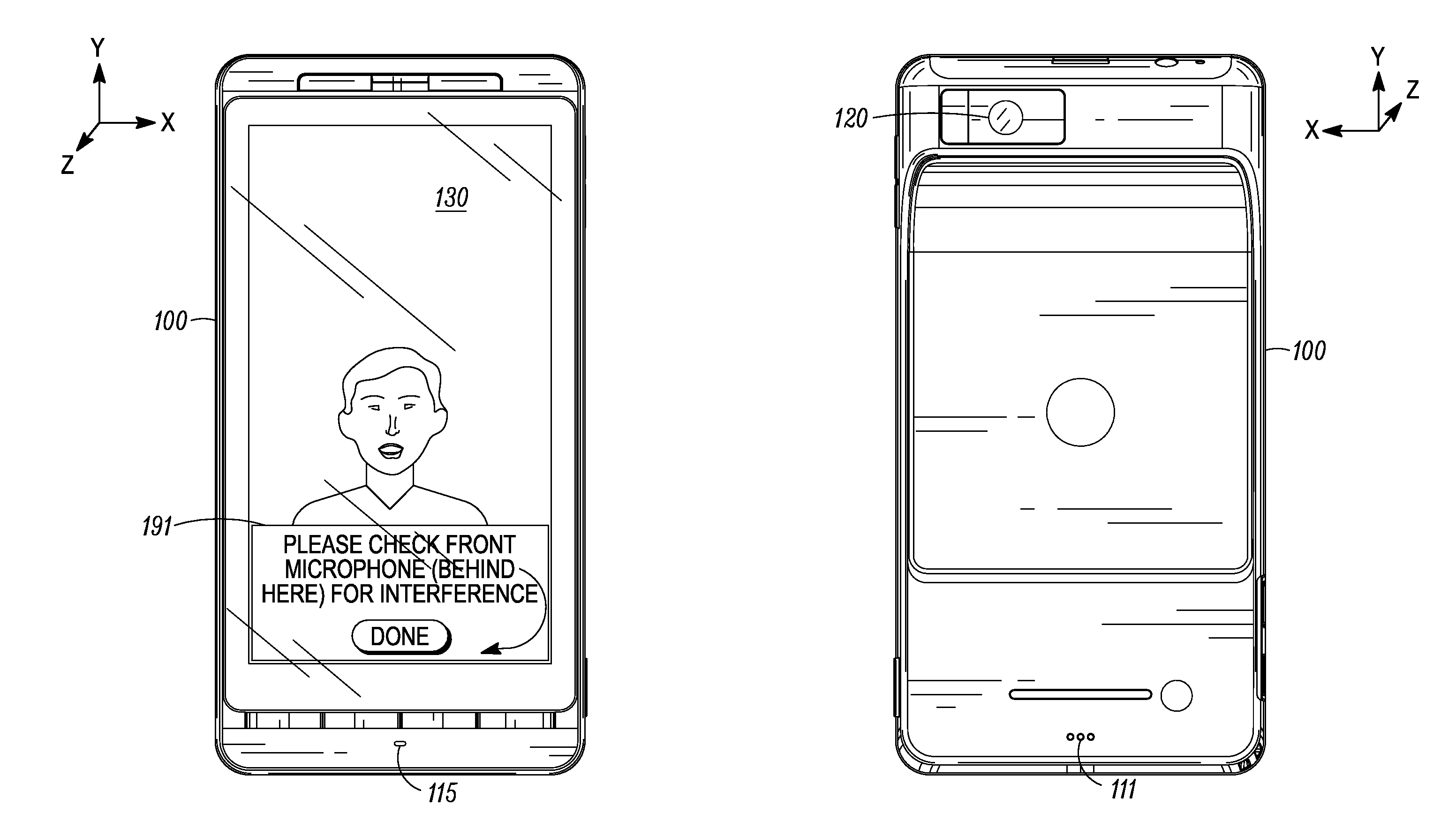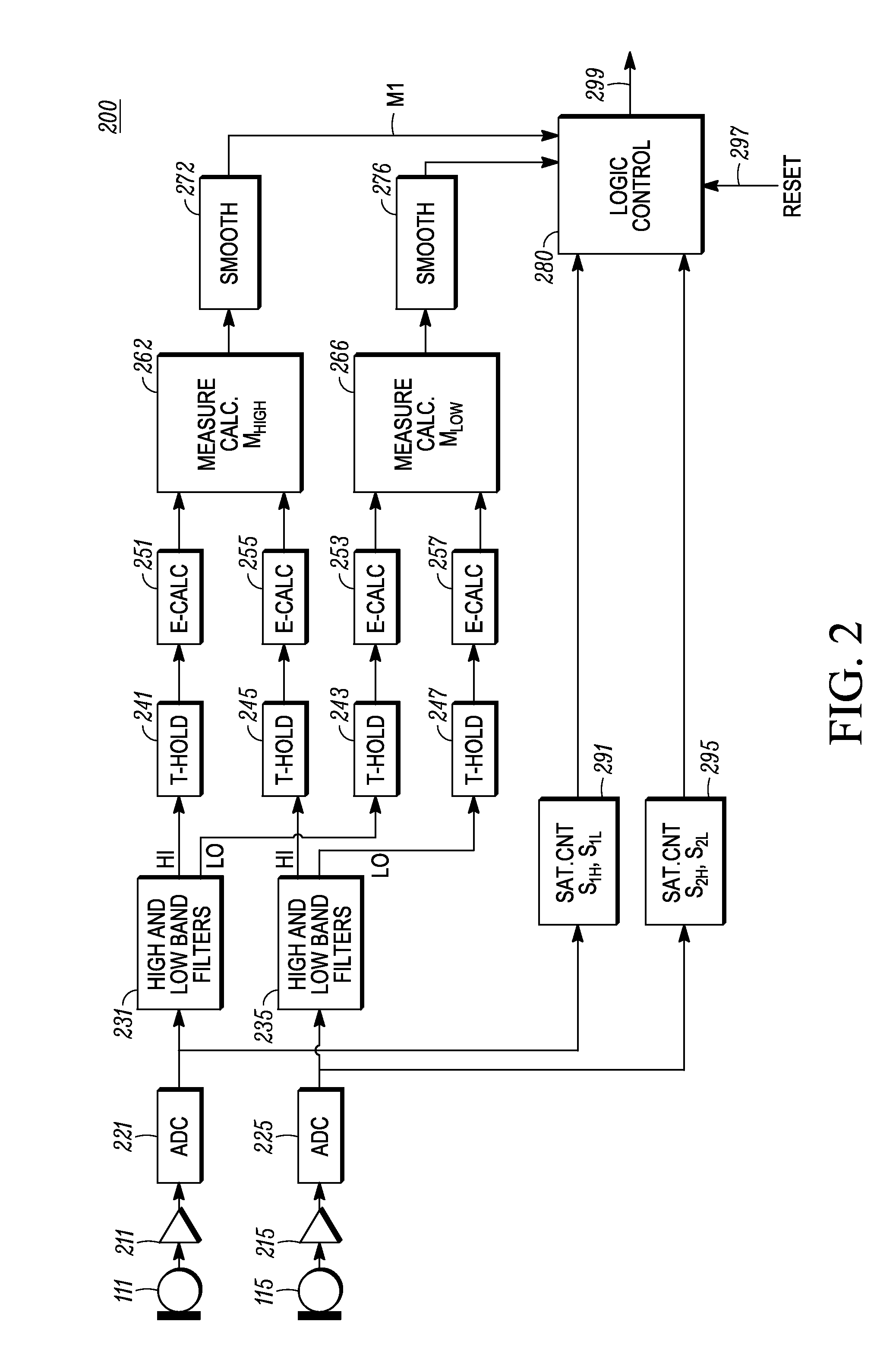Microphone Interference Detection Method and Apparatus
- Summary
- Abstract
- Description
- Claims
- Application Information
AI Technical Summary
Problems solved by technology
Method used
Image
Examples
Embodiment Construction
of FIG. 1 displaying a third notice regarding possible microphone interference.
[0010]FIG. 6 shows the example electronic device of FIG. 1 displaying a fourth notice regarding possible microphone interference.
DETAILED DESCRIPTION
[0011]A method and apparatus for detecting microphone interference includes a first built-in microphone producing a first microphone signal and a second built-in microphone producing a first microphone signal. A first filter bank creates a first high-frequency-band signal and a first low-frequency-band signal from the first microphone signal. A second filter bank creates a second high-frequency-band signal and second low-frequency-band signal from the second microphone signal. A first measurement calculator determines a high-frequency-band energy value from the first high-frequency-band signal and the second high-frequency-band signal when the first high-frequency-band signal's magnitude exceeds a predetermined first threshold and the second high-frequency-ba...
PUM
 Login to View More
Login to View More Abstract
Description
Claims
Application Information
 Login to View More
Login to View More - R&D
- Intellectual Property
- Life Sciences
- Materials
- Tech Scout
- Unparalleled Data Quality
- Higher Quality Content
- 60% Fewer Hallucinations
Browse by: Latest US Patents, China's latest patents, Technical Efficacy Thesaurus, Application Domain, Technology Topic, Popular Technical Reports.
© 2025 PatSnap. All rights reserved.Legal|Privacy policy|Modern Slavery Act Transparency Statement|Sitemap|About US| Contact US: help@patsnap.com



